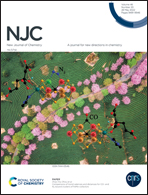Comparisons of bond valences and distances for CO- and N2-bound clusters of FeMo-cofactors†
Abstract
By comparisons of N2 and isoelectronic substrate CO bound FeMo-cofactors (FeMo-cos) in nitrogenases, we have used a classical bond valence method to calculate the oxidation states of the iron and molybdenum atoms in FeMo-cos. For single N2- and CO-bound FeMo-cos that have the same charge in iron counterparts, Fe1/7 can be unambiguously assigned to Fe(III), while Fe3/4/5 show different degrees of mixed valences related to the individual iron atoms in FeMo-cos. The only difference is the valence of binding sites Fe2 and Fe6, where N2-bound FeMo-co in 6UG0 shows +3 and +2, respectively, while the opposite is observed in the CO-bound FeMo-cos in 4TKV. For double CO- and N2-bound FeMo-cos with different coordination modes, the N2-bound species in 6UG0 performs a similar oxidation state and more electron-localized than those of CO-bound species in 7JRF. Calculations also show an unprecedented Mo(II) in N2-bound FeMo-cos with monodentate homocitrate, while they show Mo(III) in CO-bound and other high resolution nitrogenases. Bond comparisons imply that monodentate homocitrate and unreasonable long Mo–O distances are attributed to the low valence of Mo(II) in N2-bound FeMo-cos.



 Please wait while we load your content...
Please wait while we load your content...